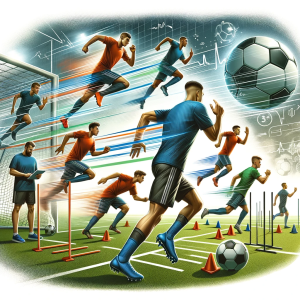
Unlocking Player Potential: How Soccer Coaches Can Leverage Open Data for Winning Strategies
The recent publication of A public data set of spatio-temporal match events in soccer competitions in Scientific Data marks a significant milestone for soccer coaches and player development. This treasure trove of data, freely available, offers an unprecedented opportunity to delve into the intricacies of soccer matches from some of the world’s top leagues.
Transforming Coaching with Data-Driven Insights
This data set is akin to finding a new playbook for soccer coaches. The detailed records of match events – including passes, shots, and fouls – provide a comprehensive view of game strategies and player performances. By analyzing this data, coaches can develop more effective training programs, tailor strategies against opponents, and enhance their team’s overall performance.
Imagine dissecting every pass and move of top players and teams. Coaches can now see patterns and tactics in a previously reserved way for teams with access to expensive, proprietary data. This democratization of data opens up new avenues for coaches at all levels to refine their approaches and strategies.
Player Development: A Data-Driven Approach
The impact on player development is perhaps even more exciting. Coaches can use this data to track players’ progress, identify improvement areas, and understand the dynamics of player interactions on the field. By examining the detailed actions of players during matches, coaches can provide targeted feedback and personalized training regimens.
For instance, by analyzing passing networks, a coach can identify which players are central to the team’s ball movement and devise strategies to enhance their influence in games. Similarly, by examining shots and positioning data, coaches can fine-tune their offensive strategies to maximize scoring opportunities.
The Future of Soccer Analytics
The open availability of such a comprehensive data set is a game-changer in soccer analytics. It levels the playing field, allowing coaches from smaller clubs and academies to access the same data quality as top-tier teams. This democratization could lead to a more competitive landscape where tactical innovation and data literacy become key differentiators.
Moreover, the fusion of this data with emerging technologies like AI and machine learning can lead to even more sophisticated analyses. We can expect to see more predictive models of player performance, injury prevention strategies, and perhaps even AI-driven coaching assistants in the near future.
Conclusion
The release of this extensive soccer data set is not just a boon for researchers but a powerful tool for coaches and players worldwide. It empowers soccer professionals with the insights to enhance player development and game strategies, democratizing high-level analytics in this beloved sport.
As soccer continues to embrace the digital age, those who can skillfully navigate and apply these data-driven insights will undoubtedly lead the charge in shaping the future of the game.



